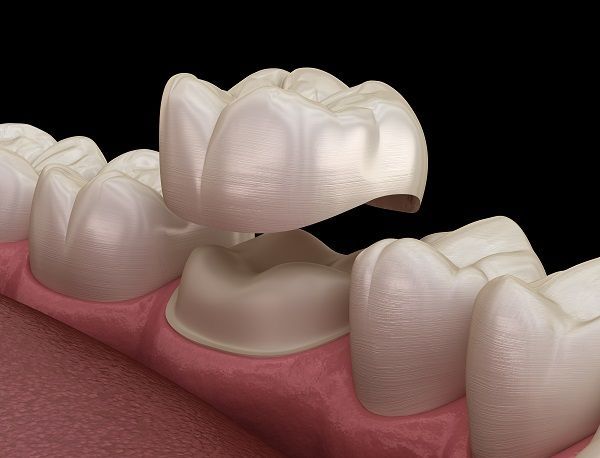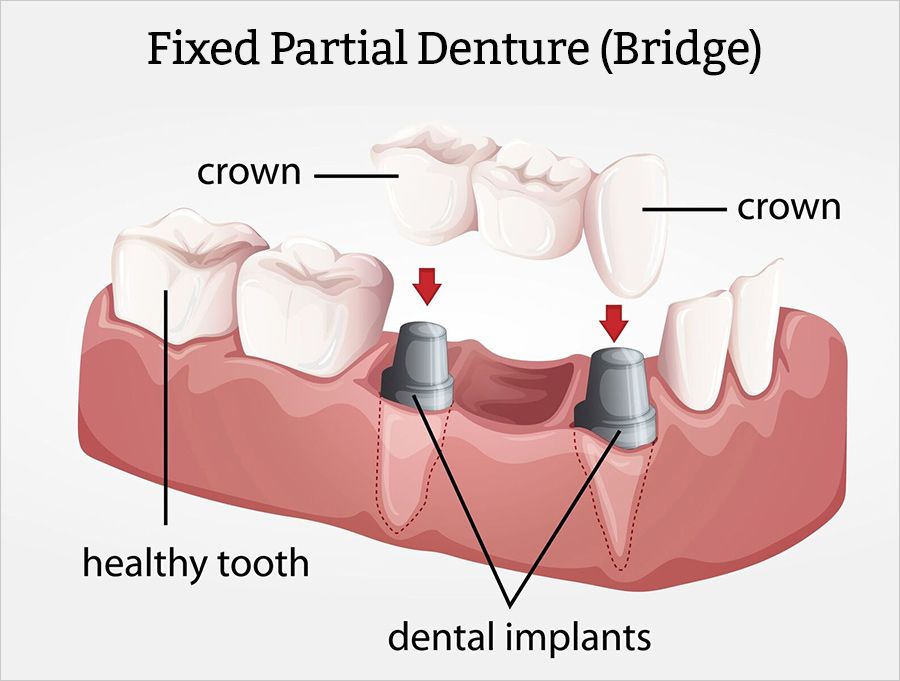Crowns and Bridges
Dental crowns and bridges are common restorations and prosthetics. While our teeth can last a lifetime, that isn’t always the case for many people. Teeth can become worn or lost to bad habits, injuries, and disease. They can also break. Dental crowns make for excellent restorations when teeth are badly damaged or diseased. Bridges are prosthetics used to replace several missing teeth. Dr. Ake provides high quality restorations to help restore teeth, oral function, and one’s appearance.
Dental Crowns
A crown, also called a cap, is a tooth-shaped restoration used to cover an entire tooth above the gums. It will fit over biological tooth structure or a dental implant. Crowns are custom made to fit an individual’s unique oral anatomy. Many patients choose dental crowns made from tooth-colored materials such as porcelain.
Our dentist might recommend a crown when a tooth is severely decayed, worn down from damage or bruxism, chipped, or cracked. If teeth are damaged internally, a dental crown can be placed after endodontic treatment to ensure that external structure is protected, too. Crowns are also useful for improving the aesthetics of a smile when tooth-colored materials are chosen.
Bridges
Bridges are a series of connected crowns used to replace missing teeth by bridging the gap where teeth are absent. A bridge connects to biological teeth on either side or can be anchored to dental implants as well. Like crowns, people have options for the materials from which their bridges are made.
Making dental crowns and bridges is a process that requires expertise and precision. Our practice is here to make the process of receiving restorations and prosthetics as easy as possible. Call us today to reserve a consultation with our dentist, Dr. Ake.
Crowns & Bridges FAQS
WHAT IS A DENTAL CROWN?
A dental crown is a restoration used to restore a damaged tooth to its rightful dimensions. This tooth-shaped cap features a hollow area on the inside so that it can fit over a tooth. Crowns cover the biting surfaces of teeth and extend down all its sides to the gum line. There are many applications for dental crowns in dentistry. When it comes to restoring diseased or broken teeth, a crown will protect a tooth by covering its weakened structure so that patients can enjoy improved oral function and retain their biological teeth. Dental crowns, when made from tooth-colored materials, can be used as cosmetic enhancements. Bonding multiple crowns over discolored, chipped, and worn teeth can produce a vibrant, healthy-looking smile. Crowns are also used as restorations for dental implants. The implant will replace lost root structure while the dental crown attached to it will replace the visible portions of teeth.
IS IT PAINFUL TO RECIEVE A DENTAL CROWN?
Receiving a dental crown is not an overly invasive procedure. When administering any type of restorative treatment, our team will utilize local anesthetics to prevent discomfort. Local anesthetics will prevent a person from feeling sensations of pain when teeth are being prepared for restorations. After the tooth is prepared, a custom dental crown will be bonded over biological tooth structure. Receiving a crown is not much different from a filling in terms of the sensation one might feel. In fact, our patients overwhelmingly report that their procedures were comfortable and positive.
HOW DO YOU TAKE CARE OF A DENTAL BRIDGE?
Dental bridges are a great way to address minimal tooth loss. They are fixed prosthetics that bridge the gap between empty tooth sockets and natural teeth. Made from a series of cemented crowns, a bridge is not removed for cleaning like dentures. Instead, patients will brush their bridges along with their biological teeth. When cleaning a bridge, it is important to brush along the gums as well and floss daily. Some people choose to use water irrigators to clean underneath their bridges so that gum tissue under the prosthetic stays clean and healthy. While bridges don’t require removal or special solutions for cleaning, it is important that patients keep regular appointments for checkups and cleanings to ensure that gums and teeth surrounding and supporting the bridge stay healthy.
HOW MUCH DOES A DENTAL BRIDGE COST?
The cost of a bridge varies. Sometimes, patients might require extractions prior to receiving their prosthetics. The type of materials used to construct a bridge affect cost as well. As for out-of-pocket costs, it is important for patients to check with their dental insurance provider to determine what level of coverage is offered for restorations and prosthetics. After consulting with our dentist, our staff can give an estimate on costs. As a courtesy to our patients, we will file insurance claims on their behalf.





